Filter by
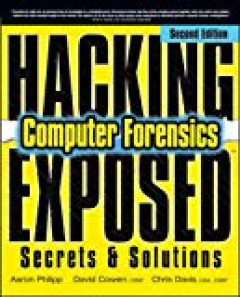
Hacking exposed computer forensics: secrets & solutions
Terdapat indeks. Table of contents: Part 1 Preparing for an incident 1 The forensics process 2 Computer fundamentals 3 Forensic lab environment preparation Part 2 Collecting the evidence 4 Forensically sound evidence collection 5 Remote investigations and collections Part 3 Forensic investigation techniques 6 Microsoft Windows Systems analysis 7 Linux analysis 8 Macintosh anal…
- Edition
- Second edition
- ISBN/ISSN
- 9780071626774
- Collation
- xxiv, 518 hal.; ilus.; 23 cm
- Series Title
- --
- Call Number
- 005.84 PHI h

Digital forensics processing and procedures: meeting the requirements of ISO …
Terdapat bibliografi dan indeks. Table of contents: 1 - Introduction 2 - Forensic Laboratory Accommodation 3 - Setting up the Forensic Laboratory 4 - The Forensic Laboratory Integrated Management System 5 - Risk Management 6 - Quality in the Forensic Laboratory 7 - IT Infrastructure 8 - Incident Response 9 - Case Processing 10 - Case Management 11 - Evidence Presentation 12 - Sec…
- Edition
- --
- ISBN/ISSN
- 9781597497428
- Collation
- xxi, 857 hal.; ilus.; 28 cm
- Series Title
- --
- Call Number
- 363.25 WAT d
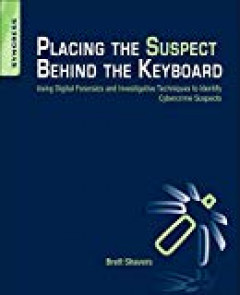
Placing the suspect behind the keyboard: using digital forensics and investig…
Table of Contents Chapter 1. Introduction Digital Evidence Collection Simple File Copying “Dead Box” Approaches “Live Box” Approaches Decision-Making FlowChart Preview/Triage SmartPhones and Cellular Devices Chapter 2. High Tech Interview Introduction The Main Goal of Questioning a Suspect The Line of Questions for Suspects Questions for Victims Questions for Network Adm…
- Edition
- --
- ISBN/ISSN
- 9781597499859
- Collation
- xxii, 267 hal.; ilus.; 25 cm
- Series Title
- --
- Call Number
- 363.25 SHA p
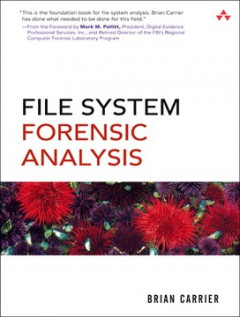
File system forensic analysis
Table of contents: Digital investigation foundations Computer foundations Hard disk data acquisition Volume analysis PC-based partitions Server-based partitions Multiple disk volumes File system analysis FAT concepts and analysis FAT data structures NTFS concepts NTFS analysis …
- Edition
- --
- ISBN/ISSN
- 9780321268174
- Collation
- xx, 569 hal.; ilus.; 24 cm
- Series Title
- --
- Call Number
- 363.25 CAR f
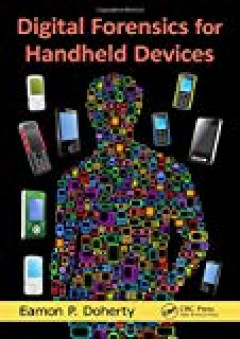
Digital forensics for handheld devices
Table of contents: 1. Preface 2. Disclaimer 3. Author 4. The cell phone 5. Digital camera forensics 6. The PDAs and digital forensics 7. GPS devices 8. Corporate investigations on a netbook 9. Cell phone investigations by police 10. Recovering existing or deleted data from USB devices 11. Places to work at investigating mobile devices 12. References 13. …
- Edition
- --
- ISBN/ISSN
- 9781439898772
- Collation
- xxvii, 303 hal.; ilus.; 27 cm
- Series Title
- --
- Call Number
- 363.25 DOH d
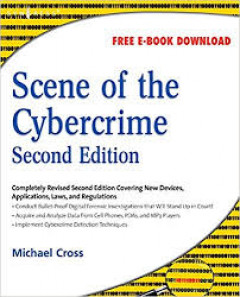
Scene of the cybercrime
Table of Contents 1. Facing the Cybercrime Problem Head-on 2. Emerging Cybercrime Techniques 3. Understanding the People on the Scene 4. The Computer Investigation Process 5. Acquiring Data, Duplicating Data, and Recovering Deleted Files 6. Understanding Network Intrusions and Attacks 7. Understanding Cybercrime Prevention 8. Implementing Cybercrime Det…
- Edition
- 2nd Edition
- ISBN/ISSN
- 9781597492768
- Collation
- iv, 732 hal.; ilus.; 24 cm.
- Series Title
- --
- Call Number
- 005.8 CRO s

Virtualization and forensics: a digital forensic investigator's guide to virt…
Table of contents: 1. How virtualization happens 2. Server virtualization 3. Desktop virtualization 4. Portable virtualization, emulators, and appliances 5. Investigation dead virtual environments 6. Investigating live virtual environments 7. Finding and imaging virtual environments 8. Virtual environments and compliance 9. Virtualization challenges 10. Cloud computing and the forensi…
- Edition
- --
- ISBN/ISSN
- 9781597495578
- Collation
- xvii, 253 hal.; ilus.; 24 cm
- Series Title
- --
- Call Number
- 005.8 BAR v
Network forensics: tracking hackers through cyberspace
Table of contents: Part I: Foundation Chapter 1: Practical Investigative Strategies Chapter 2: Technical Fundamentals Chapter 3: Evidence Acquisition Part II: Traffic Analysis Chapter 4: Packet Analysis Chapter 5: Statistical Flow Analysis Chapter 6: Wireless: Network Forensics Unplugged Chapter 7: Network Intrusion Detection and Analysis Part III: Network Devices and Servers…
- Edition
- --
- ISBN/ISSN
- 9780132564717
- Collation
- xxvi, 545 hal.; ilus.; 24 cm
- Series Title
- --
- Call Number
- 005.8 DAV n

Computer incident response and forensics team management: conducting a succes…
Contents: 1. The stages of incident response 2. The security incident response team members 3. Incident evidence 4. Incident response tools 5. Incident response policies and procedures 6. Legal requirements and considerations 7. Governmental laws, policies and procedures 8. Forensics process 9. Forensics team member requirements 10. Forensics team policies and procedures 11. Manageme…
- Edition
- --
- ISBN/ISSN
- 9781597499965
- Collation
- xiii, 333 hal.; ilus.; 24cm
- Series Title
- --
- Call Number
- 658.4 JOH c
 Computer Science, Information & General Works
Computer Science, Information & General Works  Philosophy & Psychology
Philosophy & Psychology  Religion
Religion  Social Sciences
Social Sciences  Language
Language  Pure Science
Pure Science  Applied Sciences
Applied Sciences  Art & Recreation
Art & Recreation  Literature
Literature  History & Geography
History & Geography